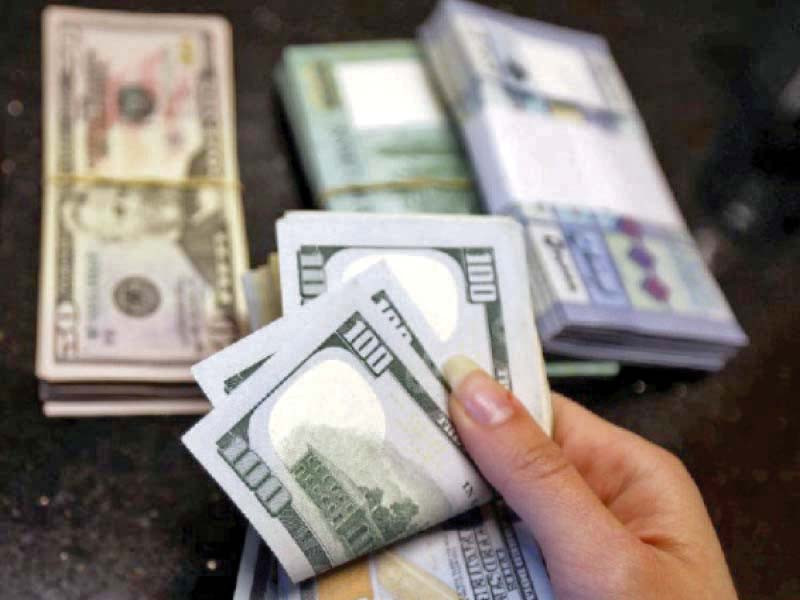
Nearly 9% appreciation of the local currency against the greenback in August has reduced Pakistan’s external public debt by about Rs2 trillion, reported the State Bank of Pakistan (SBP) in a debt bulletin on Friday, which will strengthen the hands of proponents of the stronger rupee.
The central government’s external debt was recorded at Rs17.4 trillion by the end of August, a reduction of Rs1.96 trillion compared to the preceding month, reported the central bank. The primary reason behind the reduction of external debt was the rupee appreciation. The debt summary showed that the value of the rupee was Rs218.7 to a dollar on the last day of August, up from Rs239.7 a month ago. The appreciation of Rs21, or 8.8%, helped reduce the external debt by Rs2 trillion, though new loans were taken during the month.
However, after improving to Rs214, the rupee again shed its value and dipped to Rs240 by September 26. The positive impact of the stronger rupee will strengthen the hands of new Finance Minister Ishaq Dar, who is a proponent of stronger currency aimed at containing inflation and reducing the debt servicing cost. In the past 11 trading days, the rupee has again recovered Rs20, or 8.4%, and closed below Rs220 on Friday. The strengthening of the rupee also helped lower the overall public debt by Rs991 billion in August, despite the government booking a budget deficit of Rs584 billion in the first two months (JulAug) of current fiscal year.
The SBP stated that the total public debt shrank to Rs49.5 trillion by the end of August. The public debt is still too high that is eating up half of the government’s revenues. Moody’s credit rating agency on Thursday lowered Pakistan’s credit rating to Caa1, declaring the government’s debt highly risky. After the revival of International Monetary Fund’s (IMF) loan programme, Pakistan is on the path of acquiring $40 billion in foreign loans in the current fiscal year. The devastation caused by floods will add much more to the already bloated public debt.
The federal government’s total domestic debt increased to Rs32 trillion, as Rs964 billion was added in August alone, according to the SBP. The size of long-term domestic debt increased by Rs796 billion to Rs24.6 trillion. In comparison, the size of short-term domestic debt rose from Rs7.3 trillion to Rs7.5 trillion. The World Bank has estimated that Pakistan’s budget deficit may remain around 7% of gross domestic product (GDP), which means the government will add a minimum of Rs5.3 trillion to the public debt in the current fiscal year. If Ishaq Dar manages to bring the rupee-dollar parity below Rs204 by June next year, then there will be exchange rate benefit. Otherwise, the public debt will further pile up.
The Ministry of Finance last week released the annual public debt report that showed deterioration in the indicators pertaining to debt maturity, currency risks, refinancing risks and interest rate risks. High levels of external debt could pose severe challenges in times of high current account deficit, low foreign exchange reserves and a fragile exchange rate, admitted the ministry in the report. It added that large external payments in the wake of low foreign exchange reserves could create liquidity problems and even destabilise the exchange rate which, in turn, could increase the burden of external loans measured in local currency.
According to the finance ministry, the average time-to-maturity (ATM) of the external debt dropped from six years and eight months in 2020-21 to just six years and two months in 2021-22. It also stood below the target of seven years. In the external public debt, the share of short-term debt increased from $14.3 billion to $21.4 billion in a year, one of the key reasons for the high external financing requirement of $40 billion for the current fiscal year.
Similarly, bilateral deposits by foreign countries jumped from $4 billion to $7 billion. Early data compiled by the Ministry of Finance showed that during the first two months of current fiscal year, current expenditures amounted to Rs1.09 trillion, which were equal to 12.5% of the annual allocation. A major chunk of around Rs580 billion was spent on debt servicing of previous loans.




1732256278-0/ellen-(1)1732256278-0-165x106.webp)
1725877703-0/Tribune-Pic-(5)1725877703-0-165x106.webp)












COMMENTS (2)
Comments are moderated and generally will be posted if they are on-topic and not abusive.
For more information, please see our Comments FAQ